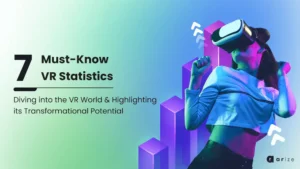Extended Reality (XR) is a term we increasingly see in the tech world. It is an umbrella term for computer-generated environments that either merges physical and virtual worlds or create an entirely virtual experience for users.
However, many people believe it is just another example of these technologies, so let’s break down the meaning of extended reality and the technologies it is made up of.
What Extended Reality is?
Extended reality is a universal term inclusive of immersive learning technologies: virtual reality (VR), augmented reality (AR), and mixed reality (MR). By bringing this together, XR can uncover a broad new spectrum of opportunities across natural and virtual-based environments.
It is a universal term inclusive of immersive learning technologies.
Understanding Extended Reality
XR runs across VR, MR, and AR and may well encapsulate future technologies that create an extension of reality that hasn’t yet been developed.
Moreover, other technologies that could be part of XR include Artificial Intelligence (AI), the Internet of Things (IoT), and others. XR covers the full range of merged and virtual environments.
By using XR, people can visit different environments and engage with them in an immersive and interactive way that mimics and matches what they can access in the real world.
Creating a fully interactive environment is a vital component of the metaverse and why extended reality is crucial to making it successful.
To truly understand XR, let’s define three main components: virtual, augmented, and mixed reality.
Virtual Reality (VR)
VR applications use headsets to create a fully immersive experience in a computer-simulated reality. The headsets generate realistic sounds and images to engage all the user’s senses to create an interactive virtual environment.
Augmented Reality (AR)
AR is a merging of environments by placing a virtual layer on top of existing reality. Instead of fully immersing users, AR uses a device, usually the camera in your smart device, to overlay digital graphics, texts, animations, and sounds onto a real-world environment.
Mixed Reality (MR)
While MR lies between VR and AR, it blends real and virtual worlds to create complex environments. Where physical and digital elements can interact in real-time. Likewise AR, it overlays synthetic content in a real-world setting. Like VR, this content is interactive; users can manipulate digital objects in their physical space.
XR is the Future
Finally, XR technologies represent valuable opportunities in many sectors like entertainment, marketing, sports, tourism, education, and more. As technology advances and evolves, we should expect extended reality to become a vital tool for all of us.



